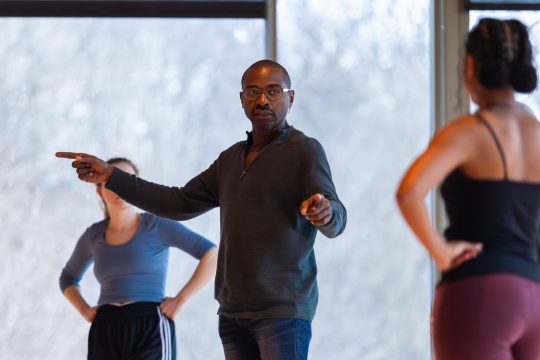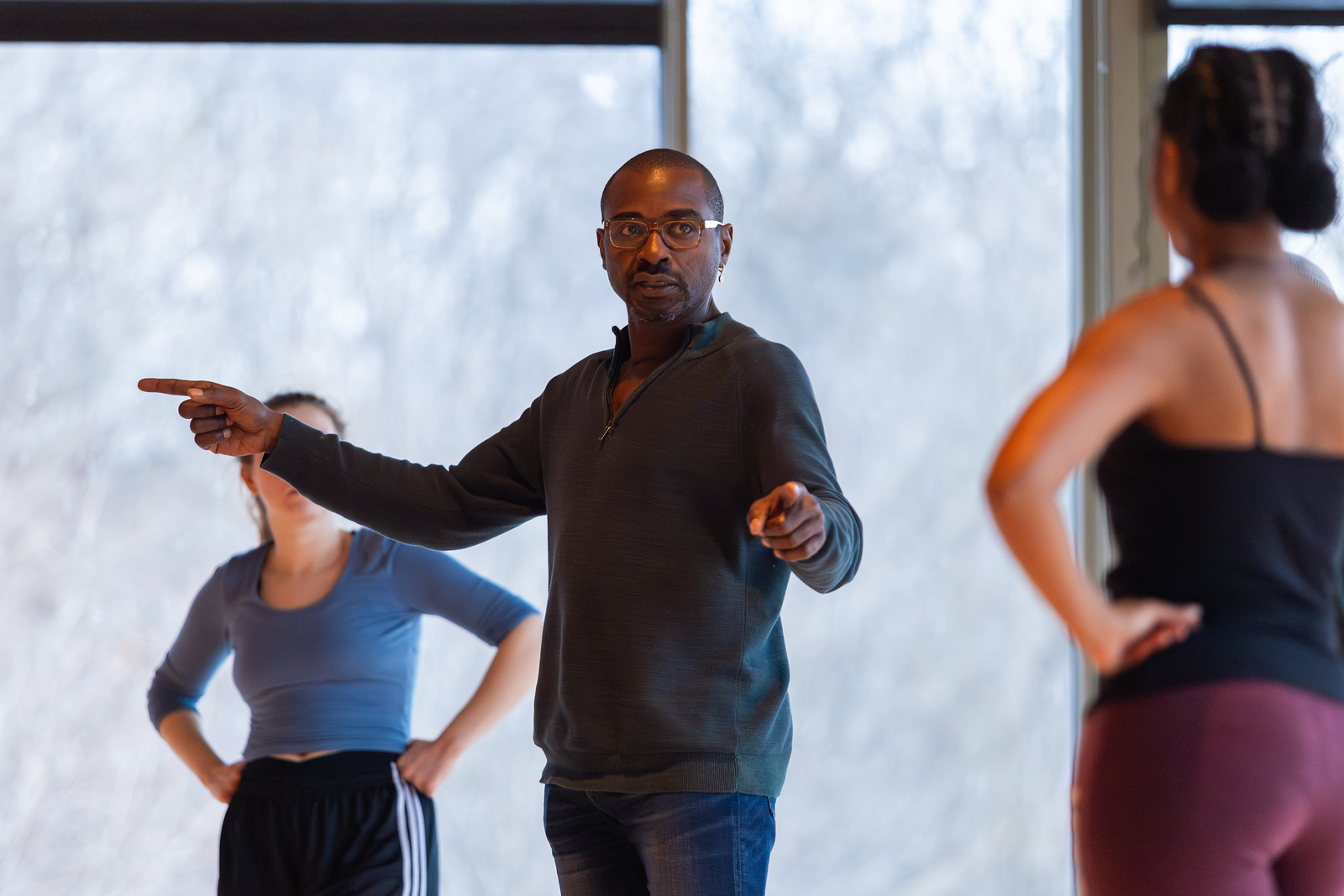Creator in Residence is in its first year of installation here at Lawrence University with choreographer Robert Battle, the former artistic director of the Alvin Ailey American Dance Theater (AAADT) and current resident choreographer of the Paul Taylor Dance Company. Battle is known for creating, with a taut movement style, a viscerality in his work, which is often based on shared empathy and collaboration. Battle’s most recent performance, the culmination of his residency, was titled “Gather Together.” The experience embodied empathy, sharing, collaboration and space.

Battle compares this dance to some creature untethered for him, one that becomes many things: “The dance is an amalgamation — sometimes it is passive in a beautiful way. You know, it’s its own creature, its own creation, it’s one entity. And every dance is that way. It is the universe that you’re creating, with its own inhabitants.”
The dancers working with Battle also spoke of the qualities Battle described. Junior Kaylen Bertrand discussed this act of inhabiting in dance after the show, stating that one does not need to “say anything,” but rather embody, “as there’s so much more meaning behind actions than just words.”
Jasmine Germany, a sophomore, and Bruna Velez, a senior, mentioned the opportunity to see Battle with AAADT. Germany stated, “It was a dance that [I’d] never seen before as a child.”
Additionally, Germany explained it was meaningful for her to be able to perform not just in front of Lawrence students but for elementary students as well — on Friday, May 9, before the show opened to the public, area elementary-schoolers visited to watch. For Battle, childhood and family are emphasized, as he credits his mother, Dessie Williams, and her artistic license.
“You know, my mother is really my cousin, but she raised me as her child. So, this notion of coming together from different perspectives, different definitions of what family is, means that we’re able to create a sense of family wherever,” Battle said. “Just like I’ve done, I believe, here at Lawrence in this process.”
This sense of shared empathy, space and embodiment in dance was positively spoken about by Visiting Assistant Professor of Dance Margaret Sunghe Paek. She emphasized the value of the title of Lawrence’s Dance: Embodied Collaborative Practice minor and interdisciplinary area, as the moments in dance were a true embodiment of time.
According to Paek, this time has “encouraged that ability to see each other as human and to really develop actual human relationships and personal relations and see each other as, you know, still respecting each other, but seeing each other as humans.”
To see one another, one listens. Battle often spoke in anecdotes; there was a tinge of humor when he would tell his stories. One such example he presented was his meeting of President Carter, who he says was then just “Laurie Carter,” as she was not yet President of Lawrence University at the time. Battle traversed through the story as though it was an orchestra itself; it was almost so an immediate regret when I interrupted him to ask if this was the “housing story” that he told at a Q&A earlier that year.
Recounting the story, Battle said that he met President Carter when he was in dire need of housing during his time at Julliard in 1990. Laurie Carter found him work during this tribulation. Much like dialogues or reenactment, through Battle there is inquiry that ends in the catharsis of a jovial laugh at the end of the story.
Velez, in her stories, spoke of dance as something that could be violent. She spoke about dancing at Lawrence without studio mirrors and the infliction of pain, saying, “I used to like to truly push myself, in a way that I’ve had lasting damage to my hips and ankle, but learning to actually take care of your body is super important.”
Professor Paek, along with Battle, emphasized the embodiment in dance at Lawrence. Paek stated, “Dancing is not about colonizing your body — the dance that we bring here is about listening to yourself and finding the wisdom that already is in your body.”
The impetus of dance is something powerful, an act of expression to form words. As Battle put it, “Dance expresses those things that are so intangible, that you can’t put into words. And dancers can speak it with their bodies.”
There is magic to the dancers, but also for the choreographer like Battle, someone that can look at the performance holistically. The quality that Battle possesses is a word that is yet to come to fruition, for Battle’s talent with the human condition is one that only dance can convey.

